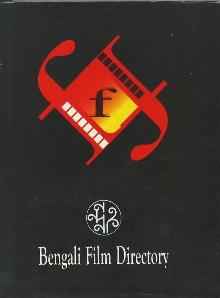 W
WBengali (বাংলা), also known by its endonym Bangla, is an Indo-Aryan language and the lingua franca of the Bengal region of Indian subcontinent. It is the most widely spoken language of Bangladesh and the second most widely spoken of the 22 scheduled languages of India, after Hindi. With approximately 228 million native speakers and another 37 million as second language speakers, Bengali is the fifth most-spoken native language and the seventh most spoken language by total number of speakers in the world.
 W
WThe Bengali alphabet or Bangla alphabet or Bengali script is the alphabet used to write the Bengali language and has historically been used to write Sanskrit within Bengal. It is one of the most widely adopted writing systems in the world.
 W
WThe Bengali Language Movement was a political effort in East Pakistan that advocated the adoption of Bengali as an official language. The movement faced violent opposition by the government before finally succeeding. Numerous songs, poems, novels and plays were written to commemorate the movement, as well as films and memoirs.
 W
WBangla Academy is an autonomous institution funded by Bangladesh government to promote and foster the Bengali language, literature and culture, to develop and implement national language policy and to do original research in the Bengali language. Established in 1955, it is located in Burdwan House in Ramna, Dhaka, within the grounds of the University of Dhaka and Suhrawardy Udyan. Bangla Academy hosts the annual Ekushey Book Fair.
 W
WBengal studies is an interdisciplinary academic field devoted to the study of the Bengali people, culture, language, literature, and history. The focus of this field, which qualifies as area studies and cultural studies, is on Indic Bengalis who follow an indigenous system of faith and refer to themselves as Bengalis. It is a subset of South Asian studies or Indology.
 W
WConsonant clusters in Bengali are very common word-initially due to a long history of borrowing from English and Sanskrit, two languages with a large cluster inventory. A smaller number of words with word-final clusters have also been borrowed from English and Persian. A handful of words from non-standard dialects of Bengali include native clusters.
 W
WBengali Film Directory is an archive of Bengali films. Published in March 1999 by Nandan, West Bengal Film Centre (Calcutta), this directory was edited by Ansu Sur and was compiled by Abhijit Goswami. It includes all Bengali feature films released from 1917 to 1998, described briefly, but including detailed cast and crew, director name, release date and release theater name.
 W
WBengali is one of the Eastern Indo-Aryan (Magadhan) languages, evolved from Magadhi Prakrit and Pali languages native to the Indian subcontinent. The core of Bengali vocabulary is thus etymologically of Magadhi Prakrit and Pali languages. However, centuries of major borrowing and reborrowing from Arabic, Persian, Turkish, Sanskrit, Austroasiatic languages and other languages has led to the adoption of a wide range of words with foreign origins; thus making the origins of borrowed and re-borrowed words in the Bengali vocabulary numerous and diverse, due to centuries of contact with various languages.
 W
WBishwo Shahitto Kendro (BSK), is a non-profit institution in Bangladesh to promote reading habits, enlightenment and progressive ideas among students and general public. Popularly known as just Bhrammaman Library, this institution was established by famous writer, television presenter, organiser, and activist Abdullah Abu Sayeed. Sayeed was given the 97th Ramon Magsaysay Award in Journalism, Literature, and Creative Communication Arts for "... cultivating in the youth of Bangladesh a love for literature and its humanizing values through exposure to the great books of Bengal and the world" – which was a recognition of the contribution of the library.
 W
WBengali grammar is the study of the morphology and syntax of Bengali, an Indo-European language spoken in the Indian subcontinent. Given that Bengali has two forms, চলিত ভাষা and সাধু ভাষা, it is important to note that the grammar discussed below applies fully only to the চলিত (cholito) form. Shadhu bhasha is generally considered outdated and no longer used in neither writing nor in normal conversation. Although Bengali is typically written in the Bengali script, a Romanization scheme is also used here to suggest the pronunciation.
 W
WPaschimbanga Bangla Akademi is the official regulatory body of the Bengali language in West Bengal, India. Modeled after Bangla Academy of Bangladesh and France’s Académie française, the Bangla Akademi was founded on May 20, 1986 in Kolkata to act as the official authority of the language and is entrusted with the responsibility of reforming Bengali spelling and grammar, compiling dictionaries, encyclopedias and terminologies and promoting Bengali language and culture in West Bengal. Though the Akademi has no enforcement power over their rules and regulations, yet they are widely accepted by the Governments of West Bengal and Tripura as well as a considerable number of private publishing houses and institutions like the Oxford University Press and the Ramakrishna Mission.